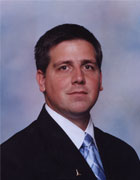Q: Next month, I'll be traveling to the Colorado Rockies, where I'll scatter my brother's ashes. He was cremated last year and is in an urn. Do I need special permission to carry his urn with me when I fly to Denver?
A: Dear Reader, you have my condolences in the passing of your brother. Making the effort to honor his wish to be scattered is a great way to honor his memory.
The Transportation Security Administration has a very helpful website that completely answers your questions regarding transporting cremated remains
http://www.tsa.gov/travelers/airtravel/specialneeds/editorial_1296.shtm.
In short, yes, cremated remains can be a part of carry-on baggage. When traveling with the urn, you should be sure to have a copy of the burial transit permit issued by the local health department. Having this document will provide assurance to verify that you have cremated remains in your baggage.
Upon arriving at the security screening station, I recommend that you alert the screener that you are traveling with cremated remains. The screener will likely ask you to remove the urn from the baggage that you may be using to carry the urn, and place it in a TSA provided tote.
The TSA insists that the container holding the cremated remains be made of a material that can be scanned. Materials such as plastic, and thin wood are suitable for such scanning. Unfortunately, an urn made of any type of metal (including bronze, copper and carbon steel) marble, leaded glass, such as crystal, is not able to be scanned using the TSA's scanning technology.
If the urn cannot be scanned, it cannot be taken aboard an aircraft, and the TSA will not open the urn to inspect the contents.
If you have the cremated remains of your brother in an urn described above that cannot be scanned, I invite you to visit us at the funeral home. We partner with the TSA to assist families traveling with their cremated loved one by transferring the cremated remains into a container that can be scanned by TSA equipment.
There are inexpensive (under twenty dollars) shipping containers that are ideal for such a transfer. We'll even help you to locate a funeral home on the receiving side of your flight to transfer the cremated body back into your urn – at no cost.
This step may not be necessary for all families. However, we have served families that want to inter an urn in a cemetery in the urn they engraved when it was purchased.
Funeral homes across the country volunteer to partner with the TSA – in providing families less hassle when traveling with cremated remains. A list of TSA partnering funeral homes is available online at: www.tsa.gov
Once the urn has been scanned, the TSA screener will assist you in returning the urn to your carry-on baggage. Keep the permit with you, and travel safely. Be aware that once you are in your aircraft, you will be expected to keep the urn in your luggage. Such luggage must be kept in an overhead storage compartment, or beneath the seat in front of you. – I offer this tip because a family I once served wanted to purchase a ticket for the urn to fly beside them in a trip to the Caribbean.
I offered to occupy the seat, and personally tend to the urn, but they saw through my attempt to steal passage to a warmer place, and declined.
Finally reader, since you have indicated that you will be scattering your brother in the Colorado Rockies, it is best to ensure that you have permission of the landowner, or local governmental subdivision (county, park district, city etc.) before scattering the remains.
Because scattering cremated remains can be an unpleasant experience, I offer the following suggestions:
Be aware that cremated remains are of a very fine, granular, almost powdery, consistency. When scattering the remains, it is best done as close to the ground as possible – I recommend stooping below knee level, to scatter them directly on the ground.
Some families participate in opening the ground, by trenching for several yards, then scatter the cremated remains into the trench. Other family members may then participate in closing the trench.
If scattering from aboard a boat, do so from the rear of the vessel, working with the direction of the wind, not against it.
Open only a small portion of the container to scatter the remains. Doing so will provide the person scattering the remains greater ability in directing the cremated remains away from clothing, and onto the area designated for scattering.
This reader, and all who plan to one day fulfill the task a scattering cremated remains are welcome to call or write for more information.
Call Us At: 386-328-1414
Write To: Watts Funeral Homes
720 Hwy. 17, S. San Mateo, Fl. 32187
Visit us online at www.wattsfuneralhomes.com
Subscribe to:
Post Comments (Atom)

No comments:
Post a Comment